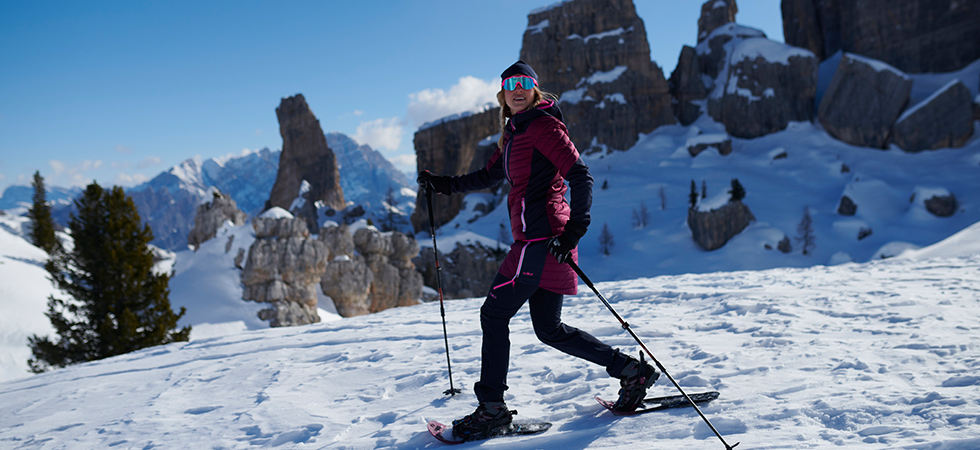What is snowshoeing?
Snowshoeing originally comes from North America. Here snowshoes were incredibly important for the locals to be able to get from A to B in winter.
Today, snowshoes are used by many people as sports equipment to enjoy great walks in nature in winter too. The great thing about it: everyone can do it! Anyone who can go hiking can also go snowshoeing. Nevertheless, you should think about a few things before your first tour. We have created a helpful overview that answers all your questions about snowshoeing.

The right equipment – what do I need for snowshoeing?
First of all, it is of course necessary to find the right snowshoes. However, it makes sense to test the sport in advance to make sure that the investment in equipment is really worth it. Meanwhile, every major ski rental company also offers snowshoes for testing.
Snowshoes are available in many different variations. The material is usually plastic or aluminium and the shoes have serrations on the underside of the frame. There is a claw on the underside of the binding, which gives you a better grip in steep and icy terrain.
Basically you need some more things than snowshoes.
Snowshoes for women:
Snowshoes for men:
Choose the right size
The size of the snowshoe depends on your body weight and the weight of your equipment. Only by choosing the right size the functionality of the snowshoes can be guaranteed. Some manufacturers, such as Tubbs, offer special snowshoes for men and women.

Which boots are suitable for snowshoes?
In any case it should be ankle-high hiking boots with a firm sole. It is also a good idea to have gaiters in your backpack to prevent snow from penetrating into your shoe. If you freeze quickly, you should definitely wear special winter hiking boots.
Avalanche safety
Anyone who goes into an area at risk of avalanches, even if only temporarily, must have all avalanche equipment with them: A tracker beacons, shovel and probe, plus first aid material and bivouac sack.
Snowshoeing without avalanche equipment is only advisable where the terrain is obviously not at risk of avalanches.
Tree holes:
When snow falls several metres high, so-called tree holes form in the woods around the individual trees. These consist of particularly loose snow and are not entirely harmless. If you fall into such a hole, you should behave in a similar way to a swamp. Move as little as possible and call for help immediately.
That is why you should never go on tour alone, not only as a beginner. At least one other person should accompany you to be able to help in emergency situations. It is also easier for you to take turns in pairs when tracking and thus save valuable energy.
Here you can find more interesting articels:











